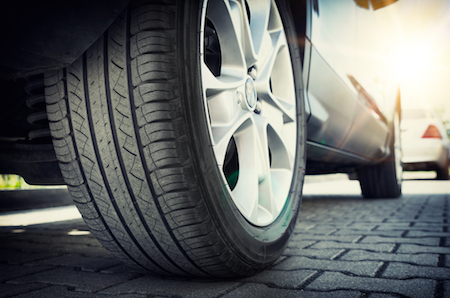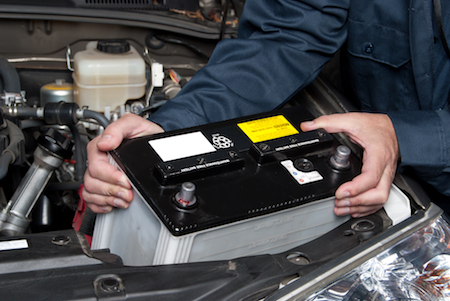All across America, the great road trip is on. Albeit differently than any summer before.
Because very few of us relish the thought of hopping on a plane in the coming weeks, more are pulling out their maps and planning an old-fashioned kind of vacation. Why not see what America has to offer? Pack your bags, hook your camper up to your truck, and let’s go!
Of course, pulling your campers, boats, water toys and more takes a lot of work. Is your truck up for the job? Here are a few truck maintenance tips to ensure your vehicle is up to the task.
Towing capacity
Have you decided this is your year to invest in new camping gear? Did you pick up a boat at a bargain price on Craigslist? Or maybe your dream of owning watercraft has finally come true. Surely your current truck can do the job, right?
Maybe not.
Don’t assume your truck has the proper towing capacity for the job. Check your owner’s manual instead. It will tell you how much pulling capacity you have without damaging your vehicle or impacting the ability to handle the load safely as you travel up and down hills and around tight corners. Too much weight on your tow could damage wheel bearings, brakes, transmission, axles, or even your engine.
Towing equipment
 If you’re new to towing, be sure to invest in the right towing equipment for the job. In most towing situations, you’ll need four pieces of equipment:
If you’re new to towing, be sure to invest in the right towing equipment for the job. In most towing situations, you’ll need four pieces of equipment:
Hitch
Hitch receiver
Drawbar
Hitch ball
If you have the right equipment, you’ll safely tow your equipment behind you wherever the road takes you. If you don’t, you could be staring at crushed campers and watercraft at the bottom of a ravine.
Every setup is created for a specific weight and size class. The mini camper you towed last summer isn’t necessarily the same as the boat you recently purchased. Check with your owner’s manual for classification, as well as read up on the new equipment you’ve purchased.
Trailer details
When you’re towing various toys for camping and having fun on the water, it’s no longer just about your truck. You have a trailer to think about too. That means in addition to caring for your truck before you head out on the road, you’ll have to have your trailer checked out too. Make sure you have:
- Trailer lights – ensure the electrical wiring is properly attached to ensure taillights and brake lights are in good working condition.
- Secure load – whether it’s simply pulling a mini trailer, or if you have a variety of toys spread out in the back of your truck, ensure it’s all properly covered or tied down. You don’t want to reach your final destination, only to discover you’ve lost half your load along the way.
- Check your tires – while trailers and other towable equipment may not have a lot of running internal parts, you will be dependent on the wheels and tires to get you where you’re going. Sometimes you off-road it, being more vulnerable to things that can flatten or blow a tire. Are they in good shape before you leave?
Safe truck checkup
When you’re about to head out on vacation, it’s a good idea to give your truck a thorough checkup before you leave home. When you drop off your truck for an inspection, mention your vacation plans and what you’ll be towing. That will give our mechanics a better idea of what to look for, and make recommendations based on your plans.
While these aren’t the only things you should check, it’s a starting point.
Brakes – not only will you be using your brakes to stop your truck, but you’ll also be adding weight behind you in what you’re towing. Having brakes that are even slightly worn could be a hazard to your safety.
While it might be a natural tendency to ride the brakes with the added weight behind you, especially as you navigate turns and hills, this can only increase the chance of overheating them. Instead, choose to drive at a slower speed. Some trailers come with their own braking system. While this takes practice to be able to coordinate the two tougher, it can reduce the likelihood of putting too much pressure on your own braking system.
Cooling – no matter where you’re driving to this summer, chances are you’ll be using your air conditioner to help you stay cool. This intensifies the possibility of your truck breaking down. That extra load puts more stress on your vehicle, so ensure all of your cooling system parts are working well before you head out. That includes the radiator, water pump, thermostat, cooling fan, and other systems attached to your vehicle.
Suspension – check both your truck’s suspension system and whatever you’re towing as well. For driving around town, your truck may have lighter duty shocks that can present problems when you start to pull a heavy load. A heavier duty shock absorber will help keep your vehicle stable while towing. Plus it will make your ride smoother too.
Fluids – not only will you be pulling a heavier load wherever you go, but you’ll also be doing it on potentially some of the hottest days of the year. It’s time to check all of the fluid levels throughout your vehicle to ensure you’re topped up and ready to go.
Start with motor oil. This isn’t a time to skimp and look for bargains. Instead, trust brand name synthetic motor oil and transmission fluid to give your engine added protection throughout the summer and beyond. Replace oil filters to improve performance. Top up things like windshield washer fluid – those roads can become muddy and dirty from brief rainstorms and more.
It’s summer – get out there and have fun!
Before heading out on your summer adventure, spend a little time preparing your truck for the process.
It’s been a stressful year. No matter if you’re heading off the beaten path, or will be following others into some of the most well-loved monuments in this country, following a few truck maintenance tips before you head out will ensure you arrive safely, and that you don’t spend more time on the side of the road then you do having fun at your final destination.
Book your appointment today. We’ll ensure your truck is in perfect condition before your vacation begins.

 On modern cars, however, the parking brake is rarely needed in that circumstance. That could be why the name has morphed over time from the emergency brake to the parking brake.
On modern cars, however, the parking brake is rarely needed in that circumstance. That could be why the name has morphed over time from the emergency brake to the parking brake. But as much as that can stop you in your tracks, it’s even more annoying knowing it could have been avoided.
But as much as that can stop you in your tracks, it’s even more annoying knowing it could have been avoided.
 Are advanced driving assistance systems even necessary? It’s designed to keep your car out of harm’s way, to keep you safe, and take action whenever necessary to protect your investment. That makes ADAS a good thing to have on your vehicle.
Are advanced driving assistance systems even necessary? It’s designed to keep your car out of harm’s way, to keep you safe, and take action whenever necessary to protect your investment. That makes ADAS a good thing to have on your vehicle. It can also be deadly.
It can also be deadly. You may not be familiar with all the items on your service center’s menu board so here is a quick description of some of the typical services that might be listed. But understand that the menu board is there for a reference; you should speak to your service adviser about other possible needs or services.
You may not be familiar with all the items on your service center’s menu board so here is a quick description of some of the typical services that might be listed. But understand that the menu board is there for a reference; you should speak to your service adviser about other possible needs or services. This is the one smell you might mistake for an old, moldy snack left under the seats. As your car operates, you notice a rotten egg smell coming through the vents.
This is the one smell you might mistake for an old, moldy snack left under the seats. As your car operates, you notice a rotten egg smell coming through the vents.
 These devices have a battery that holds its charge. Through use, it slowly drains until it’s time to either replace the batteries, or recharge them. It’s an ebb and flow, where you know you get a certain lifecycle from the device until it’s time for replacement.
These devices have a battery that holds its charge. Through use, it slowly drains until it’s time to either replace the batteries, or recharge them. It’s an ebb and flow, where you know you get a certain lifecycle from the device until it’s time for replacement.